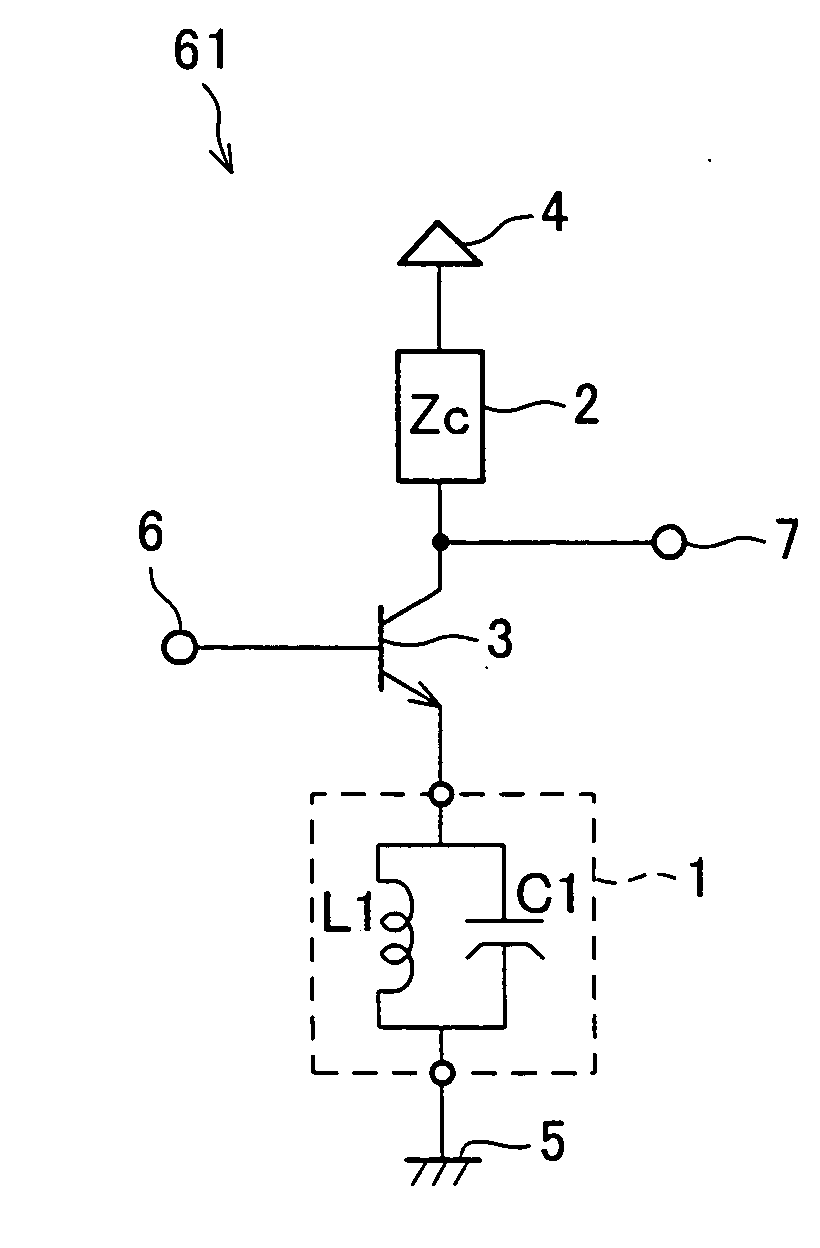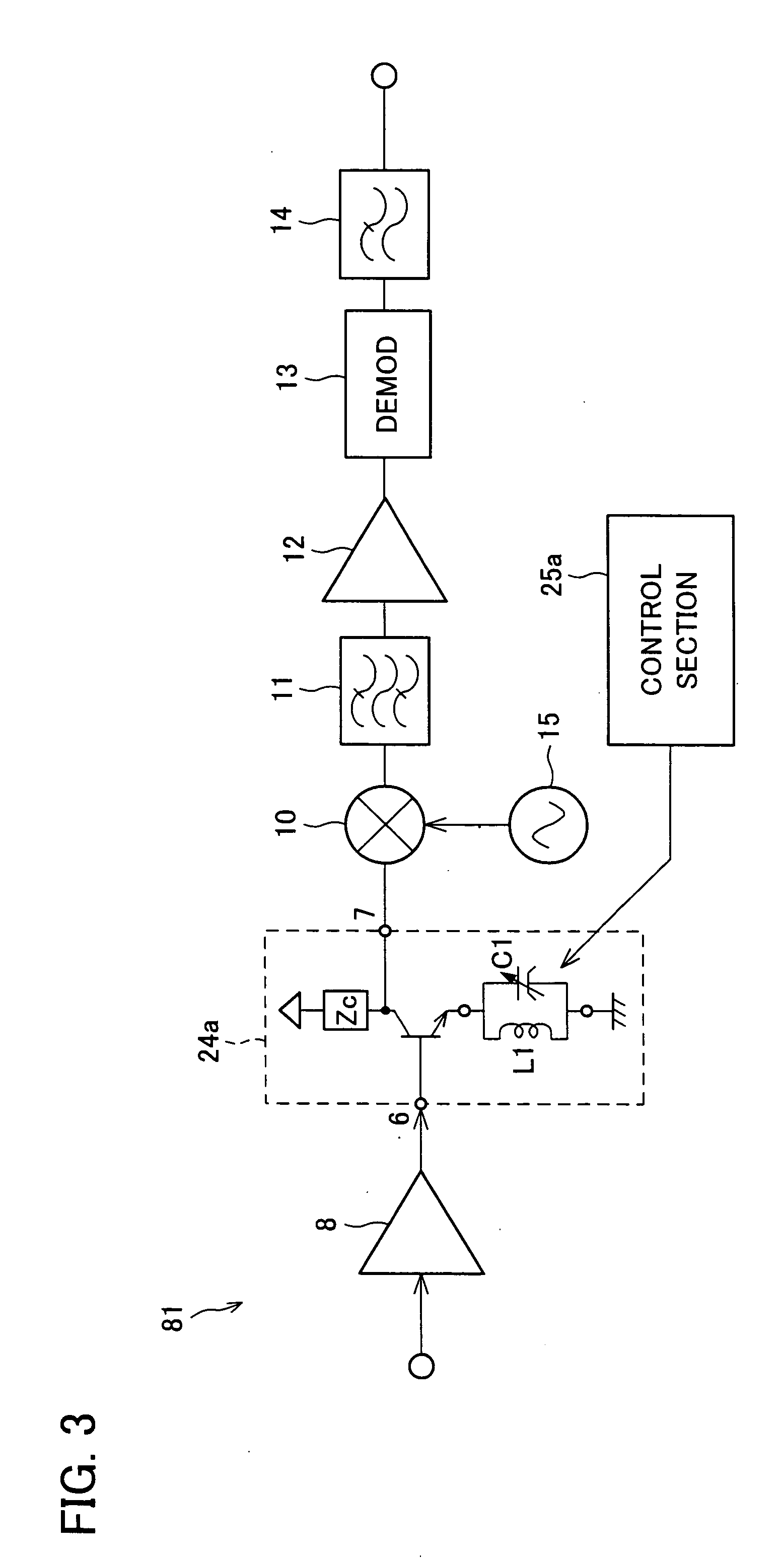Grounded-emitter circuit, and high-frequency receiver and high-frequency transmitter using the same
a technology of grounded emitter and receiver, which is applied in the direction of amplifiers, electrical devices, and semiconductor devices/discharge tubes, etc., can solve the problems of preventing sufficient canceling, generating errors in output level and phase, and unable to integrate such an image removing filter into a semiconductor ic. achieve the effect of increasing output level
- Summary
- Abstract
- Description
- Claims
- Application Information
AI Technical Summary
Benefits of technology
Problems solved by technology
Method used
Image
Examples
Embodiment Construction
[0054] With reference to FIGS. 1 through 11, the following will explain an embodiment of the present invention.
[0055] First, FIG. 11 shows a grounded-emitter circuit 51 which is a basic model of a grounded-emitter circuit in accordance with the present embodiment. The grounded-emitter circuit 51 is a grounded-emitter amplification circuit in which the emitter of a transistor is grounded to GND via an impedance. The grounded-emitter circuit 51 is provided with a transistor 3, a first impedance circuit 2, and a second impedance circuit 1. The transistor 3 is an NPN transistor, and the base of the transistor 3 is an input terminal 6 of the grounded-emitter circuit 51. The emitter of the transistor 3 is grounded to GND 5 via the second impedance circuit 1. The collector of the transistor 3 is connected to a reference voltage source 4 via the first impedance circuit 1, and is an output terminal 7 of the grounded-emitter circuit 51.
[0056] In the grounded-emitter circuit 51 as described ...
PUM
 Login to View More
Login to View More Abstract
Description
Claims
Application Information
 Login to View More
Login to View More - R&D
- Intellectual Property
- Life Sciences
- Materials
- Tech Scout
- Unparalleled Data Quality
- Higher Quality Content
- 60% Fewer Hallucinations
Browse by: Latest US Patents, China's latest patents, Technical Efficacy Thesaurus, Application Domain, Technology Topic, Popular Technical Reports.
© 2025 PatSnap. All rights reserved.Legal|Privacy policy|Modern Slavery Act Transparency Statement|Sitemap|About US| Contact US: help@patsnap.com



